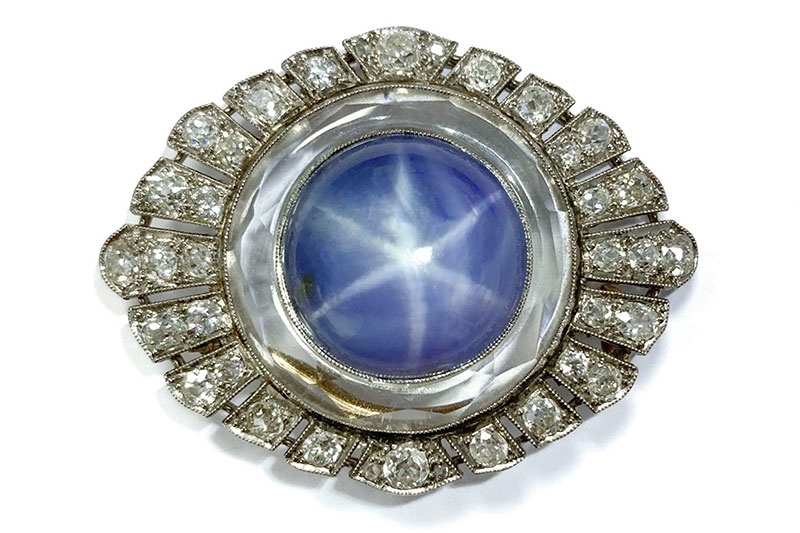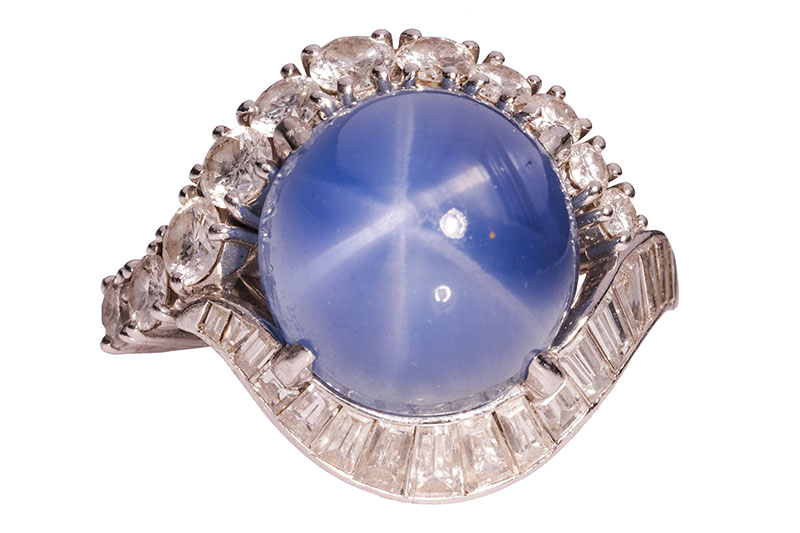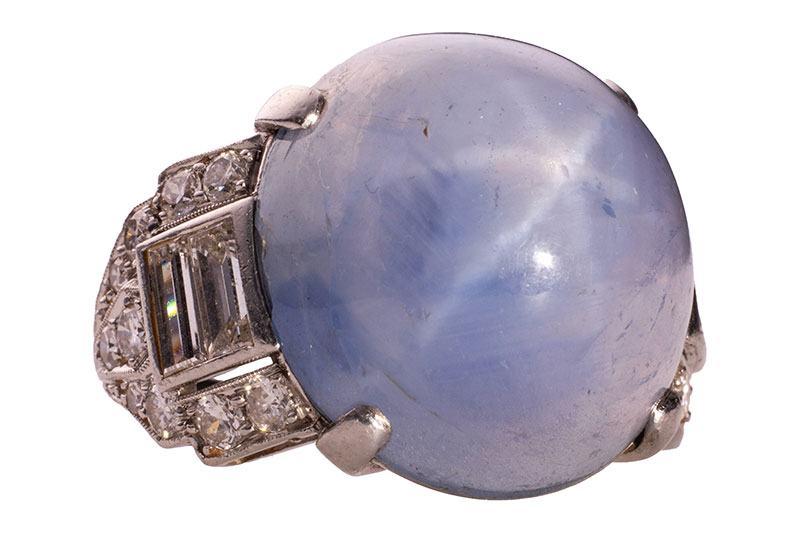How Valuable Are Star Sapphires?
Star sapphires have long been prized for their beauty and protective, mystical, qualities.
15/08/2025
A star sapphire is a corundum gemstone formed over millions of years that displays a star-like pattern on its surface when viewed under direct light. This natural phenomenon, known as asterism, occurs when needle-like inclusions of the mineral rutile within the stone are oriented to reflect light to create a six-ray star effect 'trapped' within the sapphire. Star sapphires have long been prized for their beauty and protective and mystical qualities.
Double inclusions situated on top of each other create a dazzling 12-ray effect, although this is incredibly rare. Trace mineral presence within sapphires denotes the gemstone's colour, and star sapphires can be blue, black, pink, orange, and even yellow, with blue being the most sought-after. The gemstone's geographical origin influences this diversity of colour; Sri Lanka-mined sapphires are prized for their vivid blue hue, Myanmar (Burma) sapphires are deep blue and purple, while Australia produces bright yellow and orange star gemstones.
 Star sapphire and diamond brooch
Star sapphire and diamond brooch
Star sapphires are generally cut en cabochon, with a flat bottom and a rounded, polished dome, to see the asterism at its best.
The rarity and value of star sapphires are primarily determined by the clarity and sharpness of the star, as well as the stone's colour, size, and overall quality. The presence of the rutile needles can give the sapphire a certain opaque quality, causing the gemstone to appear cloudy, which subsequently affects its value, so the most coveted examples are those with a well-defined, centred, symmetrical star and a deep, vibrant colour. Some of the rarest natural star sapphires include the Star of India, a 563-carat sapphire renowned for its size and excellent asterism. Discovered in Sri Lanka over 300 years ago, it is displayed in the American Museum of Natural History in New York. The largest blue sapphire ever discovered is the Lone Star: at a whopping 9719.50 carats, it is followed at some distance by the Star of Adam at 1404.49 carats.
A star sapphire and diamond cluster ring
Certified star sapphires with a pronounced star, rich colour, and clarity can command high prices in the market. Their collectability stems from their unique aesthetic appeal, rarity, and sophisticated formation and cutting process. Collectors prize natural star sapphires over their lab-grown counterparts, which, although chemically identical to the natural versions, are significantly less rare and, therefore, less valuable.
Here at Dawsons, we have many years of experience selling star sapphires. Our expert gemmologists understand the nuances of star sapphires and can offer independent lab testing to ensure our sellers are given the most accurate estimates. Recent successes at auction include a Tiffany star sapphire and diamond cluster ring, which fetched £8,000, and a 1920s star sapphire and diamond brooch, which achieved £8,600.
A star sapphire and diamond ring
Our expert team provide a seamless service covering valuation, logistics, dynamic in-house marketing, and sale. Dawsons’ sales are broadcast live across multiple auction platforms to a global audience of over 10 million active bidders for maximum exposure.
Dawsons’ sole focus is to achieve the highest possible sale price for clients, through expert evaluation and multi-channel marketing.
RELATED ARTICLES
Is a Sapphire Ring Worth Anything?
How Rare is a Kashmir Sapphire?
How Do I Sell Unwanted Jewellery?
Are you thinking of selling any jewellery? Or maybe you have a sapphire ring you'd like to sell?
Please do get in touch, should you have any queries or maybe you have a different piece you would like to have valued.
We would love to hear from you.
Call us on 0207 431 9445 or email us directly on info@dawsonsauctions.co.uk.

